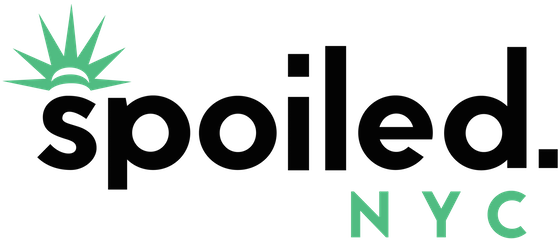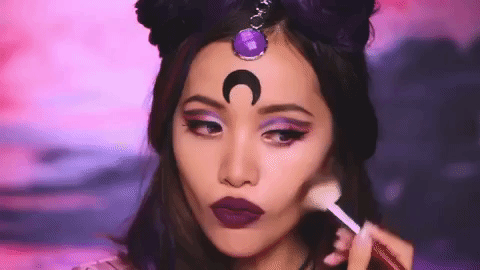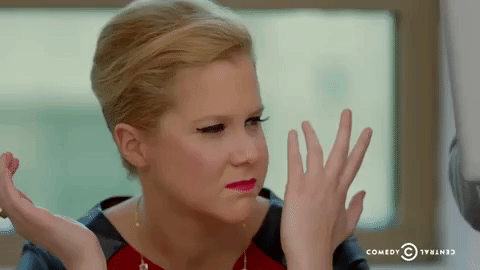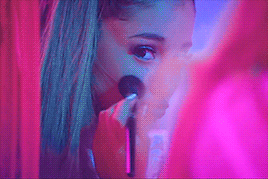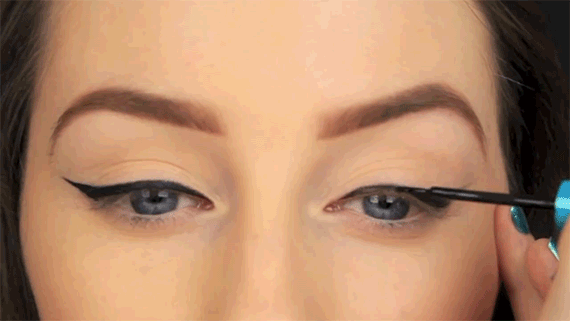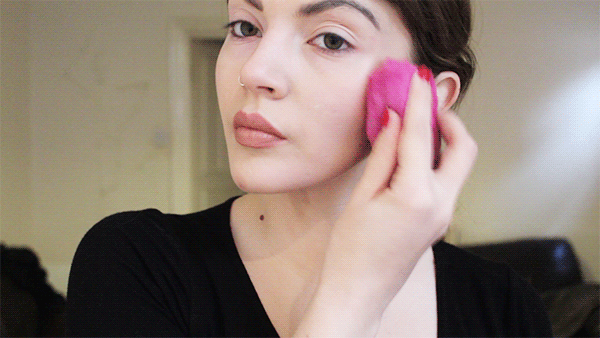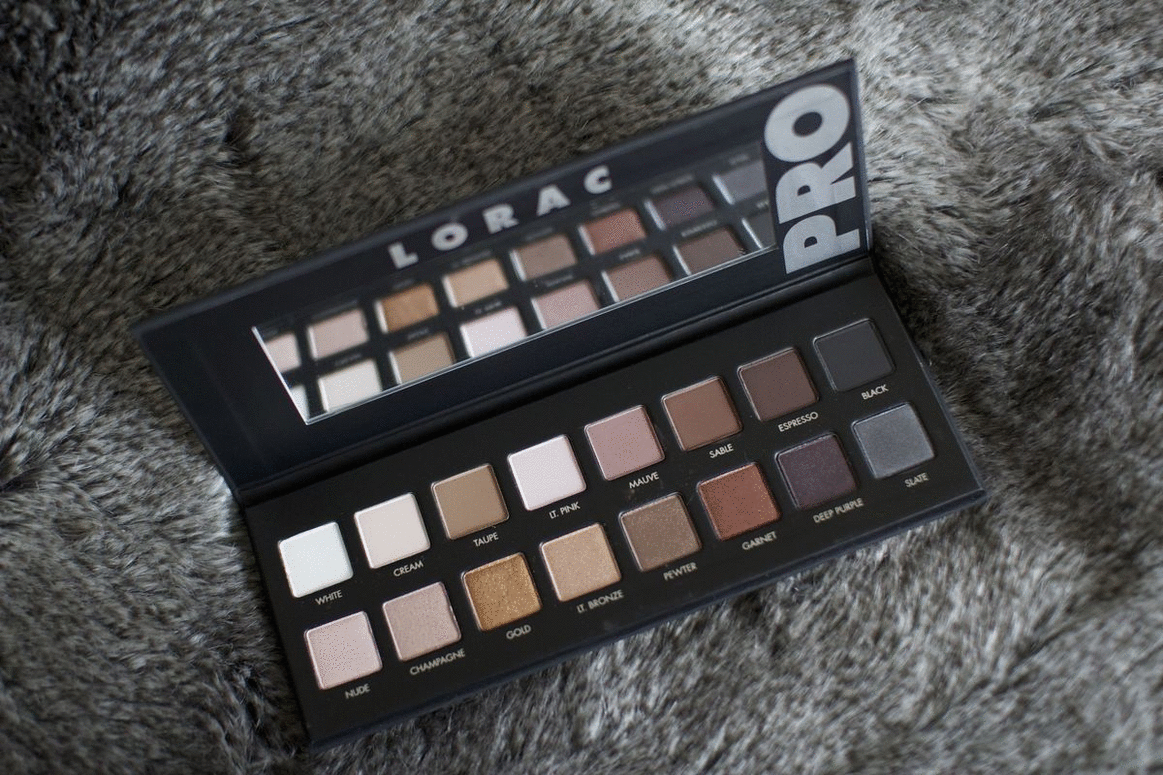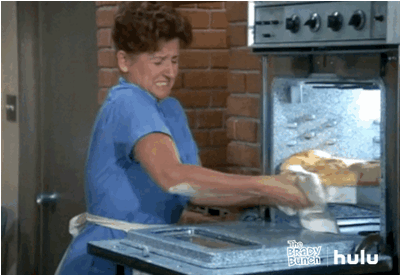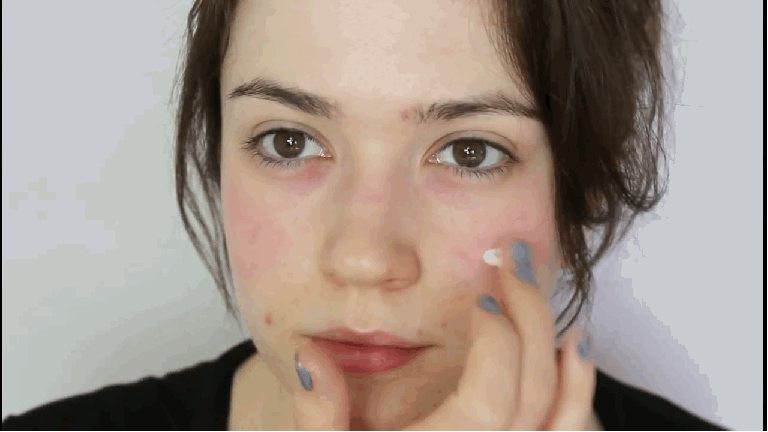Interested in learning a little more about make-up, but literally have no clue what these make-up bloggers are talking about? Honey, me too sometimes.
With words thrown around the beauty industry like contouring, draping, baking; the world of beauty (which is universal type of love) can make it seem as if you need to learn an entirely new language.
Whether you’re just starting to try different make-up products, or have been at it for a second, but still get confused by the terminology, here are some definitions to terms being repeatedly used in the world of make-up.
Hopefully learning some of terms will help make learning about make-up a little less intimidating.
When learning about anything new, take the time to get settled in and most importantly, just relax and have fun!
1. Contour
Perhaps one of the most heard-about, but least understood term of makeup, especially in a post-Kardashian world.
Contouring is a make-up application technique that uses darker and lighter shades to highlight and define areas of your face, such as your cheeks and chin, to give a more “defined” look to certain features such a cheekbones or nose.
Love it or hate it, contouring is a make-up trend that is staying strong and will definitely take a while to master.
2. Non-Tour
No, we’re not making words up here, I promise.
[anad]
Non-tour, if you hadn’t already guessed, is a play off the term and make-up technique, contour. Non-touring is essentially using primer (I’ll explain what that is later), tinted moisturizer, and highlighter to, for lack of a better term, "highlight" your features and create a very fresh, natural look, as opposed to the drama that usually comes along with contouring.
3. Highlighter
No, it is not what you used to use in your textbook, trying to cram for a test the night before you’re supposed to take it. It is a type of make-up you use, typically high up on your cheekbones, on the tip of your nose, on your cupid’s bow, and so on, to brighten and bring out a certain feature on your face.
Hint: If you don’t want to spend money on only one make-up product, you don’t even need to buy a highlighter; oftentimes you can get by with the lighter eye shadow shades you already have in a palette (more on that later).
4. Draping
We are not making up words, I swear! Draping, like contouring or highlighting, is a make-up technique focused on using blush to accent certain facial features.
5. Liquid Lipstick & Liquid Eyeliner
No, these are not make-up products that are melted off in the hot sun.
Essentially, these are products that are applied liquid and dry down into a solid finish, usually matte. With either product, it takes a little time to dry, but usually lasts longer than regular lipstick or eyeliner will.
6. Beauty Blender
No, we are not putting beauty products into a blender to make some kind of freaky beauty smoothie (think of all the powder that would be flying around your kitchen). A beauty blender is a small cosmetic sponge with which you apply make-up (usually foundation) on your face.
7. Palette
A make-up palette is a package (usually fold-out) of make-up that contains two or (often) more colors of eye-shadow, blush, lip-gloss, etc.
8. Baking
There’s baking in the kitchen, then there’s the baking that happens on your face.
[anad2]
Both forms of baking involve heat, but the one we're talking about involves letting setting powder sit on your face for 5-10 minutes, allowing the heat from your face to set your foundation and concealer, and then dusting it off to create a flawless finish.
9. Dupe
When you hear a beauty blogger raving about finding dupes, they're talking about finding a similar, less expensive version of a make-up product. For example, finding a drugstore lipstick in the exact same shade as a $50 designer label lipstick.
10. Primer
Primer is a cream or lotion applied on your face or eyelids before you apply any other type of make-up product to help your make-up go on better and stay on longer.
[Feature Image Courtesy TheOdysseyOnline]